Vattanac Golf Resort's East Course has been honored as the Best Golf Course in Cambodia for 2024 by the World Golf Awards.
Top natural things to see in Dalat
You’d be forgiven for thinking you’d entered one of the colonial hill stations of Sri Lanka or India upon stepping foot in Dalat. The city in Lam Dong Province in the south of Vietnam has more than a hint of relaxation about it; it is one of Vietnam’s most amazing natural treasures and more tourists yearly are clocking on to the wealth of nature in and around the city. A six-hour drive from Ho Chi Minh City makes Dalat too far for a day trip, but the attractions of the city are so numerous that this is probably a good thing, as tourists typically stay for 2 or 3 days before moving on. We’re focusing on just the natural sites in this blog, so here are top natural things to see in Dalat.
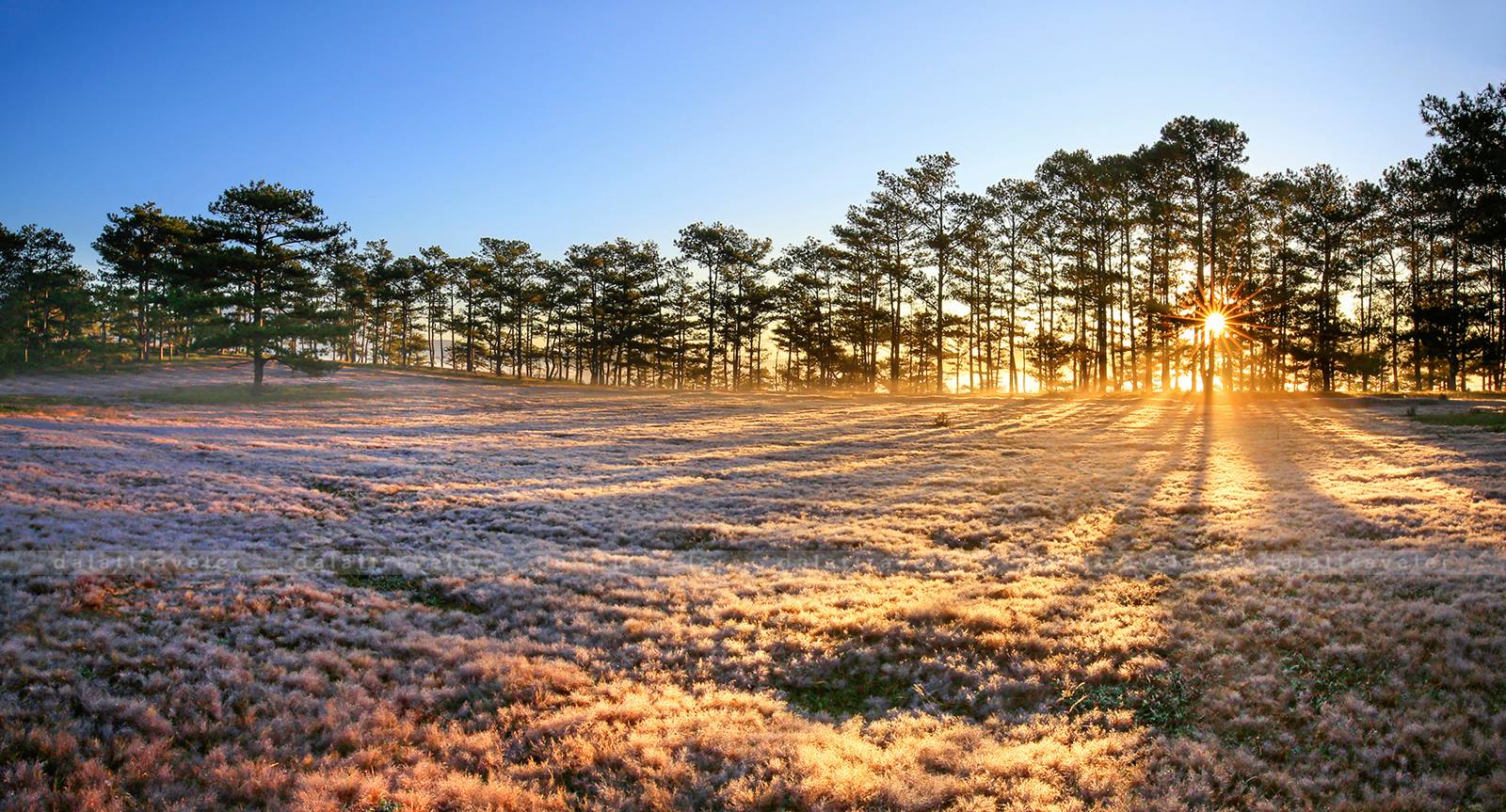
Tuyen Lam Lake
Being one of Vietnam’s few well-known inland attractions, Dalat finds itself without any coastline to claim, but the various lakes and rivers around its vicinity more than make up for a lack of sea. Tuyen Lam is its largest and one of its most picturesque bodies of water, with an area of 350 hectares that juts out dramatically to form the shape of a nerve cell. This provides it with several corners and mini-inlets that lead to fantastic views on all sides, with Dalat’s iconic gently sloping hills and, in keeping with Dalat’s colonial charm, an attractive European feel.
Getting out onto the lake is the most popular activity and constitutes one of the best natural things you can do in Dalat. Motorboats can be rented for 300,000 VND ($13 USD), while those ubiquitous swan pedalo boats floating in lakes around the country can be hired for 60,000 VND ($2.75). Obviously, you’d need some serious leg muscles to explore all 350 hectares via pedalo, so maybe opting for a kayaking tour might be a better idea. These can be booked at any tour company in Dalat and will take you around the popular sites of the lake like Truc Lam Zen Monastery, starting at around the $50 mark for a full day including transport and lunch.
Alternatively, there is cycling, horse riding and trekking available around the perimeter of the lake, the bottom part of which is tended to by a few hotels and resorts that can facilitate your sightseeing by renting bikes and providing rooms with fantastic views over the beautiful scenery.
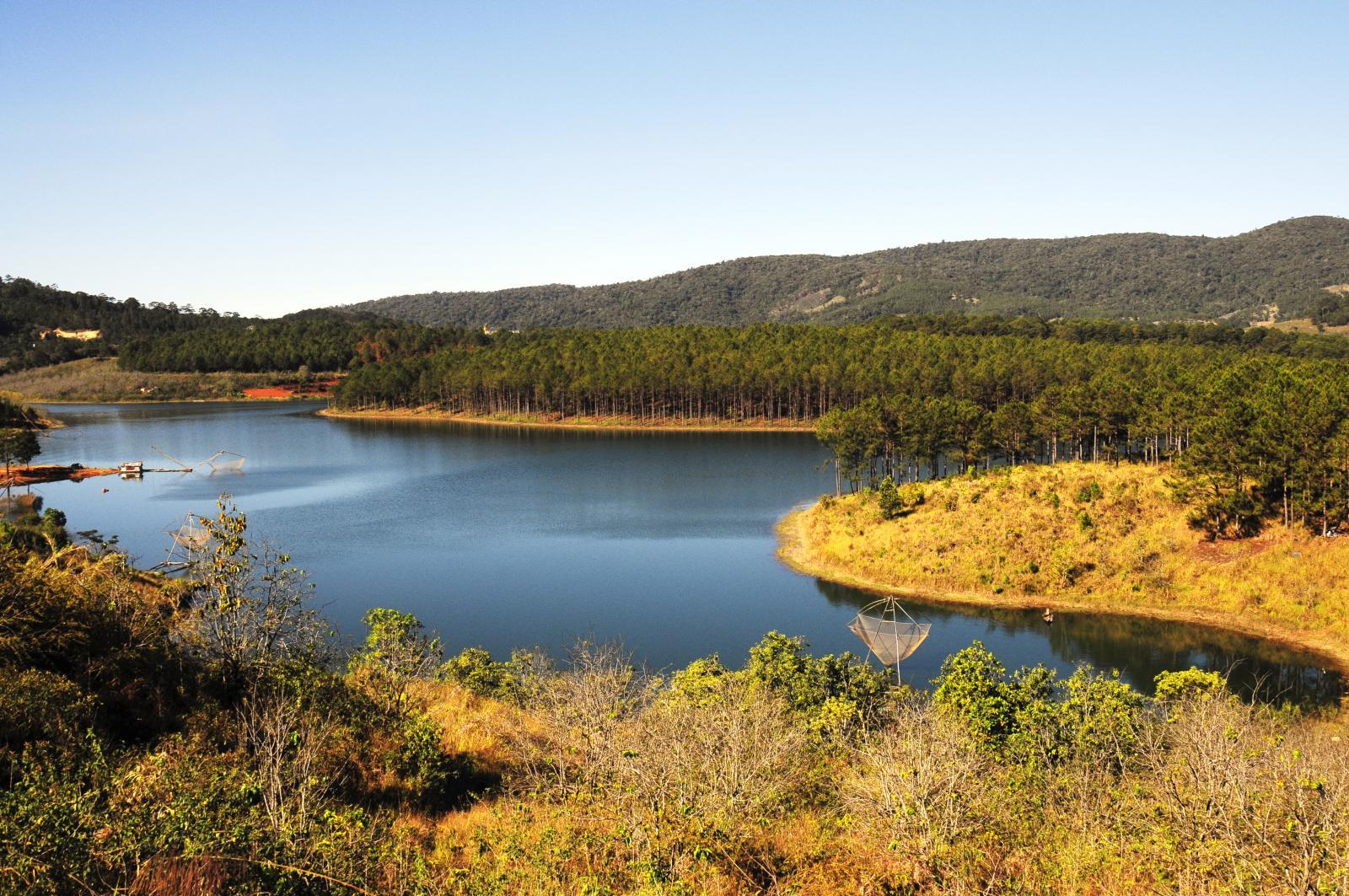
How to get to Tuyen Lam Lake
From the centre of Dalat, Tuyen Lam is about 6km south. Any kayaking tour companies will take you the whole way and back, but solo travelling will require a 15-minute motorbike or taxi ride to the entrance of Truc Lam Zen Monastery, from which you can begin exploring. There are two piers nearby where you can rent boats.
Elephant Waterfalls
The power of nature can truly be felt at Elephant Waterfalls, one of the many waterfalls of Dalat, but probably its most impressive. After the rains, a thick sheet of water cascades down 30m from the river above, creating an awe-inspiring scene that can be viewed best by the viewing platform set amongst the wild greenery of trees and bushes. For a true sense of the power of this most impressive natural attraction in Dalat, there is a small path that leads behind the falls where wind and deflected rain cause a mini typhoon, one easily powerful enough to whip hats off the tops of tourists’ heads if they stand too close.
Walking the hand-railed path down to the falls is a little adventure in itself. The stones that make up the path become very slippery when wet and the handrail needs to be held with both hands when there’s a gap between two stones in the path. Some handrails lead seemingly to nowhere, so have some patience when visiting.
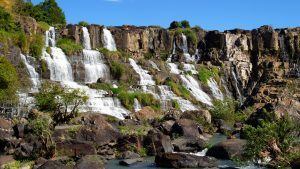
How to get to the Elephant Waterfalls
As one of the more popular natural things to see in Dalat, public transport from the city, 30km away, is fairly good. The local bus that reads ‘Da Lat – Phu Son’ will take you from the bus station on the north side of the central market to Nam Ban Village for 20,000 VND ($0.90 USD), from which you can walk to the falls. Make sure to mention ‘Thac Voi’ (pronounced “tack voy” – meaning Elephant Waterfalls) to the driver to make sure you are dropped off at the right junction.
Lang Biang
The local legend of Lang Biang tells of how two lovers from rival tribes committed suicide because of their forbidden relationship, with the graves growing into the twin peaks of Lang Biang, 20km north of Dalat. Most visitors make it as far as the Hollywood-style entrance sign before snapping their selfies and heading straight back to town. If this isn’t quite your idea of adventure, feel free to take the 3-hour hike up the 2,169m pedestrianised peak, which cuts through beautiful (and questionably signposted) pine forest, wild grass and open plains on the way to a splendid panoramic view of some other of Dalat’s natural sites.
A private jeep will take you to the non-pedestrianised peak for 300,000 VND ($13 USD), but grouping together with other solo travellers will reduce the cost of your seat to around 60,000 VND ($2.75). Be careful of changing weather atop the mountains as altitude and wind magnify the feeling of the cold; you certainly won’t want to end your challenging 3-hour climb with just 3 minutes at the top; so make sure to bring warm clothes.
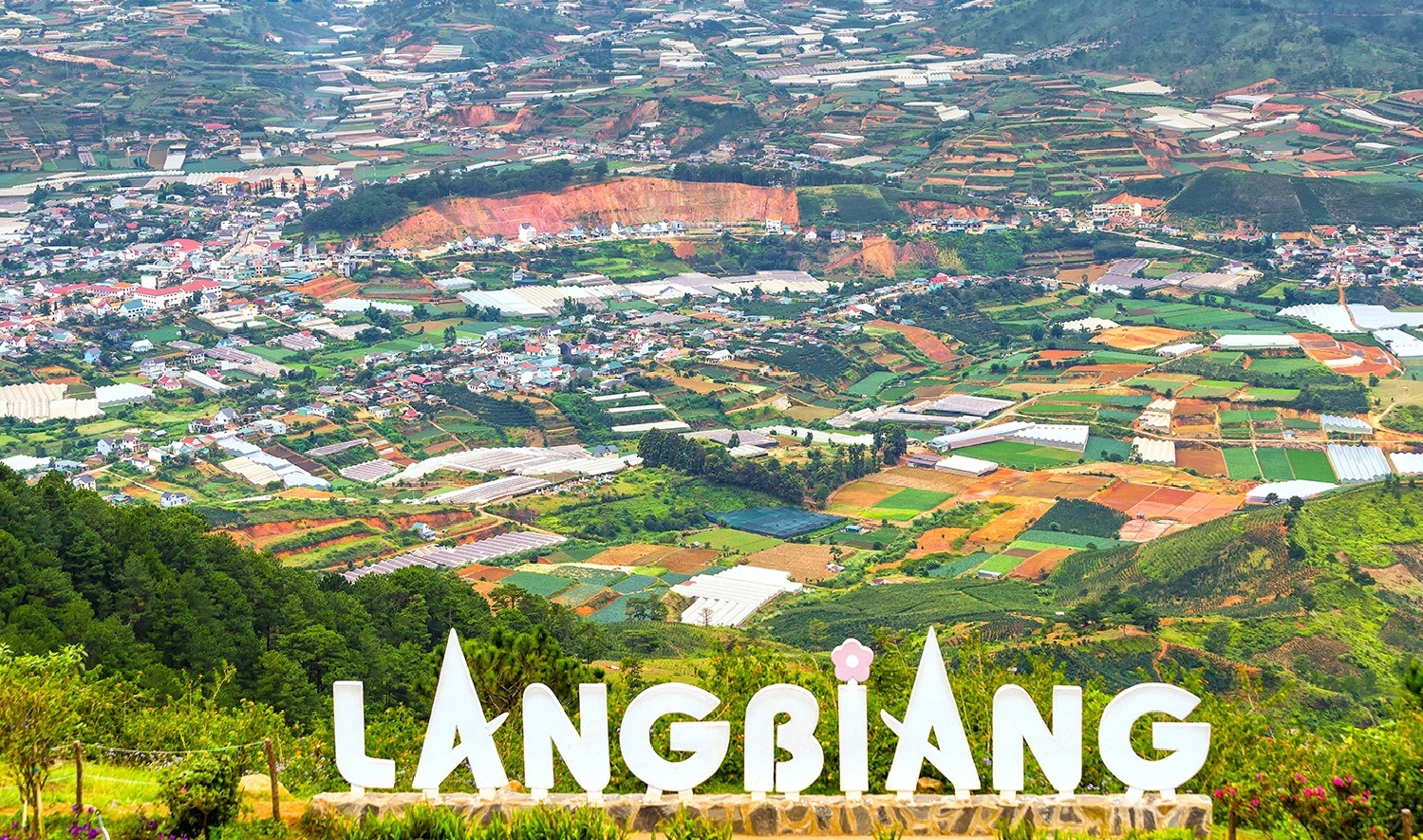
How to get to Lang Biang
Its location just 10km away places Lang Biang as one of the closest of Dalat’s top natural attractions to the city itself, accessible even by bicycle if you feel like a 3-hour climb isn’t challenging enough. A motorbike is the easiest option as parking at the site is ample, but buses provide another simple alternative. The orange FUTA bus or local green #5 bus will take you to Lac Duong, the final stop and the site of Lang Biang.
Cau Dat Tea Hill
Of the colonial hill stations around the world, it’s the tea plantations that really get cameras clicking. These beautiful arrangements of contoured hedges hugging the sloping hills have inspired many romantic images, and, are thus a favourite of Vietnamese selfie aficionados. The Cau Dat Tea Hill is one of the most effortlessly attractive natural things to see around Dalat and it provides opportunities for wonderful photographs with the hilltop houses of Dalat lying in the background.
Sitting 1650m above sea level gives Cau Dat the perfect climate for tea production. Up to 400 tonnes of oolong, black and green varieties are grown every year and exported to countries like Germany and France. There is a café with a panoramic view on site as well as a souvenir shop and much English information on tea production throughout.
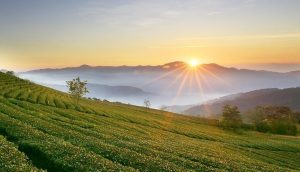
How to get to Cau Dat Tea Hill
The 40-minute ride by taxi or motorbike from Dalat is a scenic one uphill. You will pass pink cherry blossoms as well as small fruit orchards before reaching the main entrance to the park. Walking and cycling from here are the main ways to get around.
Strawberry and Giant Pumpkin Gardens
As well as tea, the altitude of Dalat gives the city the perfect climate for growing strawberries, a popular fruit around Vietnam, but one not attainable to a large amount of the population living in tropical climates. Places like the Biofresh Strawberry Farm and Japanese Strawberry Garden sit high in the hills, making use of the perfect climate to grow big, juicy strawberries, many of which can be picked by tourists before being weighed, paid for and enjoyed.
Natural farms are certainly one of the top things to see in Dalat, and none garner more photos than Le Huu Phan’s giant pumpkin farm. This is a spectacle of pumpkins weighing up to 100kg, grown from American seeds but utilising the hydroponic farming techniques of Dalat. Le Huu Phan sells his most giant pumpkins for upwards of 2 million VND ($90 USD) and has plans to grow pumpkins in the future that weigh upwards of 150kg. Other farms sporting lettuce, tomato and many other vegetables are available for touring and picking.

How to get to the Strawberry and Giant Pumpkin gardens
Most strawberry farms are around the city centre and are easily accessible. The Biofresh Strawberry Farm is about 10 minutes from the very centre of Dalat, and you will pass the giant pumpkin farm on the way. Both are easily accessible by motorbike, or even by walking, but if you are looking to buy a pumpkin the weight of a large adult, you may want to consider a taxi or maybe a truck.
Flower Gardens
The many natural things to see around Dalat have bestowed unto it various nicknames. ‘City in the Fog ’, ‘City of a Thousand Pine Trees’ and ‘City of Eternal Spring’ are three of them, but the one most applicable to its amazing array of flora is ‘City of a Thousand Flowers’. Peach blossoms, jacarandas, orchids, pansies and the eponymous ‘Da Lat rose’ make up much of the colour of the vibrant city around its parks and lakesides.
Many gardens specialise in individual flowers, including the Lavender Garden, Sunflower Garden and Orchid Garden. For the first one, head to Van Thanh Flower Village, where a field of a lavender will transport visitors to the Provence in France. Lavender is always in season, but sunflowers only bloom during the end of November and start of December, so dedicated fans of the flower will have to book their trip accordingly. Orchids can be seen best at Anh Quynh Orchid Farm, where the owner, Mr. Quynh, will be hard at work planting seeds for new species of flowers he wishes to start growing in Dalat.
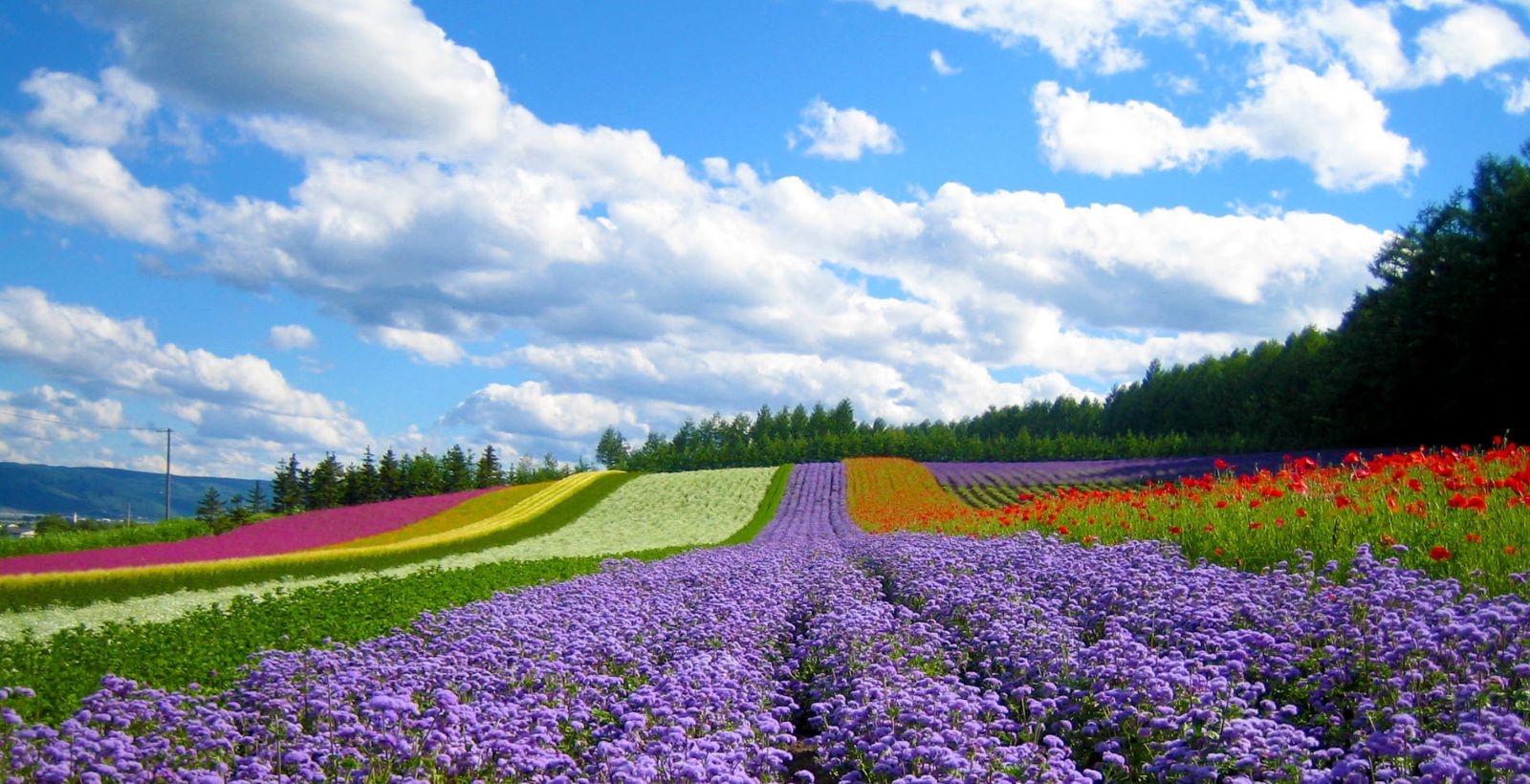
How to get to the flower gardens
While sunflowers tend to grow throughout the city and are available to view in most places, you will need to head to Van Thanh Flower Village, just 15 minutes by car southwest of the central lake in Dalat. For Anh Quynh Orchid Farm, 10 minutes north of the lake by car or 50 minutes by walking will see you there.
Source: incredibleasiajourneys


